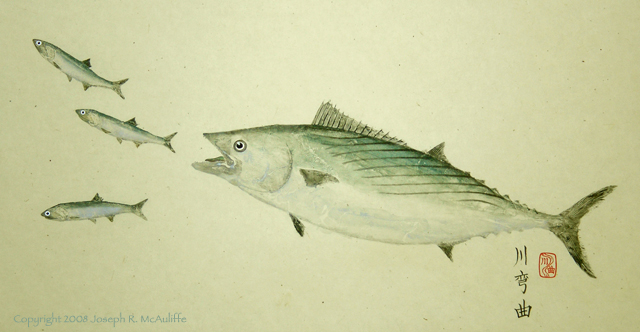
A sleek bonito chases anchovies, one of its principal foods. The bonito is a fast-growing, short-lived little tuna; they reach 20 inches long in one year and typically live only a few years. To fuel this rapid growth, a bonito consumes about 6% of its body weight per day in small fish and squid.
The streamlined, fusiform body allows the bonito to swim great distances at sustained, high speeds. In an “ideal” fusiform shape, the least drag occurs when the thickest cross-sectional area of the body is located slightly less than 40% of the distance between the front (tip of nose) and the trailing end (narrow “neck” in front of the tail). The bonito’s body closely matches this model of hydrodynamic perfection. In addition to the fusiform body shape, the fins along the body all tuck down into little slots and recesses when the fish is swimming rapidly, providing a perfectly smooth outer surface that further lessens drag.
Northern anchovies often occur in large schools that spend the daylight hours at moderate depths and travel toward the surface at night. They feed on small zooplankton that they sieve from the water with comb-like gill rakers. Anchovies are an essential intermediate link in marine food chains between their tiny prey and the many larger predators that relish anchovies.
Size: 38 x 25 inches (2001)
Return to Gallery 2.